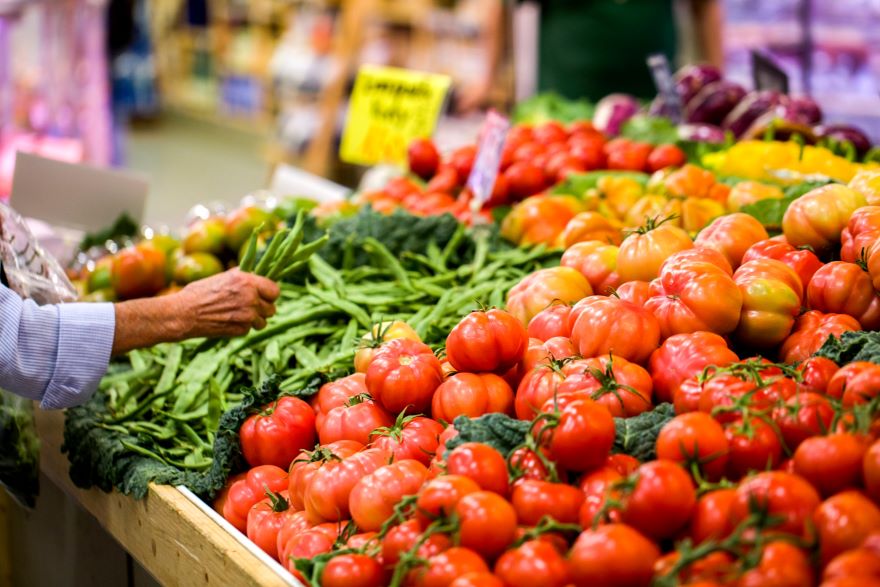Understanding the foundation of a healthy diet often begins with whole foods that are minimally processed, retaining most of their natural nutrients. These foods, including an array of fruits, vegetables, legumes, grains, nuts, and seeds, form the basis of a plant-based diet—a dietary approach focused on whole, plant-derived foods. This diet is not necessarily vegan, although many who follow a vegan lifestyle consume a high volume of whole foods.

Whole foods are not only rich in vitamins, minerals, and fiber but are also known to support a sustainable environment and may contribute to the prevention of chronic diseases. The coupling of health and environmental benefits makes adopting a whole food plant-based diet an attractive lifestyle choice for those seeking a substantial, positive impact on their wellbeing. Studies have shown that incorporating more fruits and vegetables into one’s diet can reduce the risk of cardiovascular diseases.
Key Takeaways
- Whole foods are central to a plant-based diet and represent minimally processed items.
- A plant-based diet rich in whole foods can offer numerous health benefits and mitigate chronic disease risks.
- Embracing whole foods supports both personal health and environmental sustainability.
Understanding Whole Foods

In this section, I will clarify what whole foods are, emphasize why they’re important, differentiate them from processed counterparts, and guide you in spotting them in the grocery store.
Definition and Importance of Whole Foods
Whole foods refer to natural foods that have not been heavily processed or refined. Importantly, these foods retain their nutritional profile and are often rich in essential vitamins, minerals, and fiber. For instance, selecting organic vegetables and enjoying a variety of fresh fruits can significantly enhance your diet’s nutritional value.
Difference Between Whole and Processed Foods
The main distinction between whole and processed foods is that the latter have been altered from their original state, often to extend shelf life or enhance flavor. These changes can strip away nutrients and introduce additives. Boldly contrasting, whole foods such as a crisp apple or raw nuts preserve their natural state, offering a cleaner and more nutrient-dense option.
Identifying Whole Foods in Your Grocery List
Identifying whole foods involves reading labels and choosing items with minimal ingredients. Foods like legumes, fruits, and vegetables typically don’t hide undesirable ingredients. Adhering to a plant-based diet and selecting foods that align with wild food plants in their natural form ensures that I’m choosing healthful and whole ingredients.
When I create my grocery list, I focus on including items that have undergone little to no processing, like fresh produce and organic options when available. This way, I ensure that my diet is dominated by foods that contribute positively to my health.
Benefits of a Plant-Based Diet
Adopting a plant-based diet brings a multitude of benefits ranging from personal health to environmental sustainability. It embraces whole foods abundant in nutrients necessary for maintaining and improving health.
Health Advantages and Disease Prevention
Emphasizing whole, plant-based foods in my diet enhances overall health and offers protection against numerous diseases. Fruits, vegetables, whole grains, and legumes provide essential nutrients and are high in dietary fiber, which can reduce the risk of chronic illnesses such as heart disease, type 2 diabetes, and even certain cancers. A diet rich in plants supports a robust immune system and has been linked to a lower risk of frailty, emphasizing the role of quality plant-based nutrition in maintaining strength and vitality as I age.
Weight Management and Whole Foods
A focus on whole foods within a plant-based diet aids in weight management because these foods are typically lower in calories and higher in fiber than processed foods. This can help me feel full longer and reduce the overall number of calories consumed, which is beneficial for maintaining or achieving a healthy body weight. Adopting a plant-based diet can be an effective strategy for sustainable weight loss and preventing obesity and related health issues.
Environmental Impacts of Plant-Based Eating
Choosing plant-based foods isn’t only beneficial for my health; it also has a positive impact on the environment. Plant-based diets use fewer resources and result in lower greenhouse gas emissions compared to animal product-rich diets. Choosing vegetarian or vegan meals frequently can reduce my carbon footprint and support a sustainable, eco-friendly food system.
Whole Foods and Nutrient Density
Incorporating whole foods into a diet focuses on maximizing the intake of essential nutrients, creating a foundation for optimal health. These foods offer a balance of nourishment with high availability of vitamins, minerals, and other beneficial compounds.
Macronutrients in Plant-Based Foods
Plant-based foods provide a rich source of macronutrients. Proteins, essential for muscle repair and growth, are abundant in beans, legumes, quinoa, and nuts. For instance, a cup of cooked quinoa contains about 8 grams of protein, making it a fantastic option for those who follow a vegan diet. When it comes to fats, sourcing healthy fats from whole foods is crucial. Avocado and coconut are excellent examples of plant foods that supply the body with monounsaturated and medium-chain saturated fats, supporting overall health.
Vitamins and Minerals in a Vegan Diet
Fiber-rich whole grains, seeds, and berries are not only important for digestive health but are also packed with vital vitamins and minerals. These nutrients help in maintaining numerous bodily functions, from bone health to immune system support. Including a variety of seeds in the diet can help meet daily magnesium, calcium, and iron needs, reducing common vegan nutrient concerns.
Importance of Fiber and Healthy Fats
Fiber is a key component in a whole food plant-based diet, particularly found in legumes and whole grains, aiding in digestion and satiety. Additionally, consuming healthy fats found in nuts and seeds is beneficial for heart health. By adopting a diet that emphasizes food low in saturated fat, such as a whole-food plant-based diet, one can minimize factors like daytime sleepiness, which has been linked to high saturated fat intake.
Incorporating Whole Foods Into Your Diet
Transitioning to a whole foods diet maximizes nutrient intake and improves overall health. I’ll guide you through easy swaps for healthier meals, offer whole food recipe inspiration, and show how to create balanced plant-based plates.
Simple Swaps for a Healthier Meal Plan
Refined Grains to Whole Grains: Replace white bread and pasta with their whole grain counterparts, like brown rice and quinoa, to increase your fiber intake for better digestion. For snacking, opt for raw nuts over processed chips to get healthy fats and protein.
Sugary Drinks to Natural Hydration: Swap out sugary sodas with water infused with slices of fruits such as lemons or cucumbers. This way, I keep myself hydrated and avoid excessive sugar intake.
Creating Delicious and Nutritious Recipes
Crafting Flavorful Legume Dishes: Instead of meat, I often prepare chickpeas or lentils, seasoning them with herbs and spices like cumin and turmeric, which not only add flavor but also provide anti-inflammatory benefits.
Utilizing Whole Vegetables: I make sure to use all edible parts of vegetables, such as beet greens in salads, to minimize waste and maximize nutrient consumption.
Building a Balanced Plant-Based Plate
Dividing the Plate: I create a balanced meal by dividing my plate as follows:
- 50% Vegetables: A colorful mix of vegetables ensures a wide range of vitamins and minerals.
- 25% Whole Grains: Quinoa, barley, or whole wheat provide sustained energy.
- 25% Plant Proteins: Tofu, tempeh, or beans offer essential amino acids.
By incorporating a variety of plant-based foods, I ensure I’m getting ample nutrients and enjoying a diverse palette of flavors.
Frequently Asked Questions
At Whole Foods Market, customers often inquire about the variety and quality of plants available based on my experience. Here are some detailed answers to those frequent questions.
What types of plants can I typically find at a Whole Foods market?
At Whole Foods, I’ve found a range of plants including fresh herbs, flowering plants, and seasonal offerings. The selection often includes staples like basil and mint, as well as ornamental plants that vary by location and season.
How can I determine if the plants sold at Whole Foods are organically grown?
Whole Foods markets prioritize organic products, including plants. I seek organic labels like the USDA Organic seal, frequently spotted on plants in-store, indicating organic growth.
Are there options to buy bulk or wholesale plants from Whole Foods Market?
Although primarily a retail store, some Whole Foods locations may accommodate bulk purchases for events or businesses. It’s advisable to contact Whole Foods Market directly for specifics on bulk or wholesale options.
How does the pricing for plants and flowers at Whole Foods compare to other retailers?
From my observation, Whole Foods Market’s pricing for plants and flowers can be slightly higher compared to other retailers. This often reflects their commitment to quality and sustainable sourcing practices. The prices align with the premium nature of their products.
Can customers purchase potted plants suitable for indoor environments at Whole Foods?
Yes, Whole Foods does offer a variety of potted plants suitable for indoor use. Their selection typically includes small succulents, potted herbs, and seasonal houseplants, ideal for bringing a touch of nature indoors.

*We may earn a commission for purchases made using our links. Please see our disclosure to learn more.



